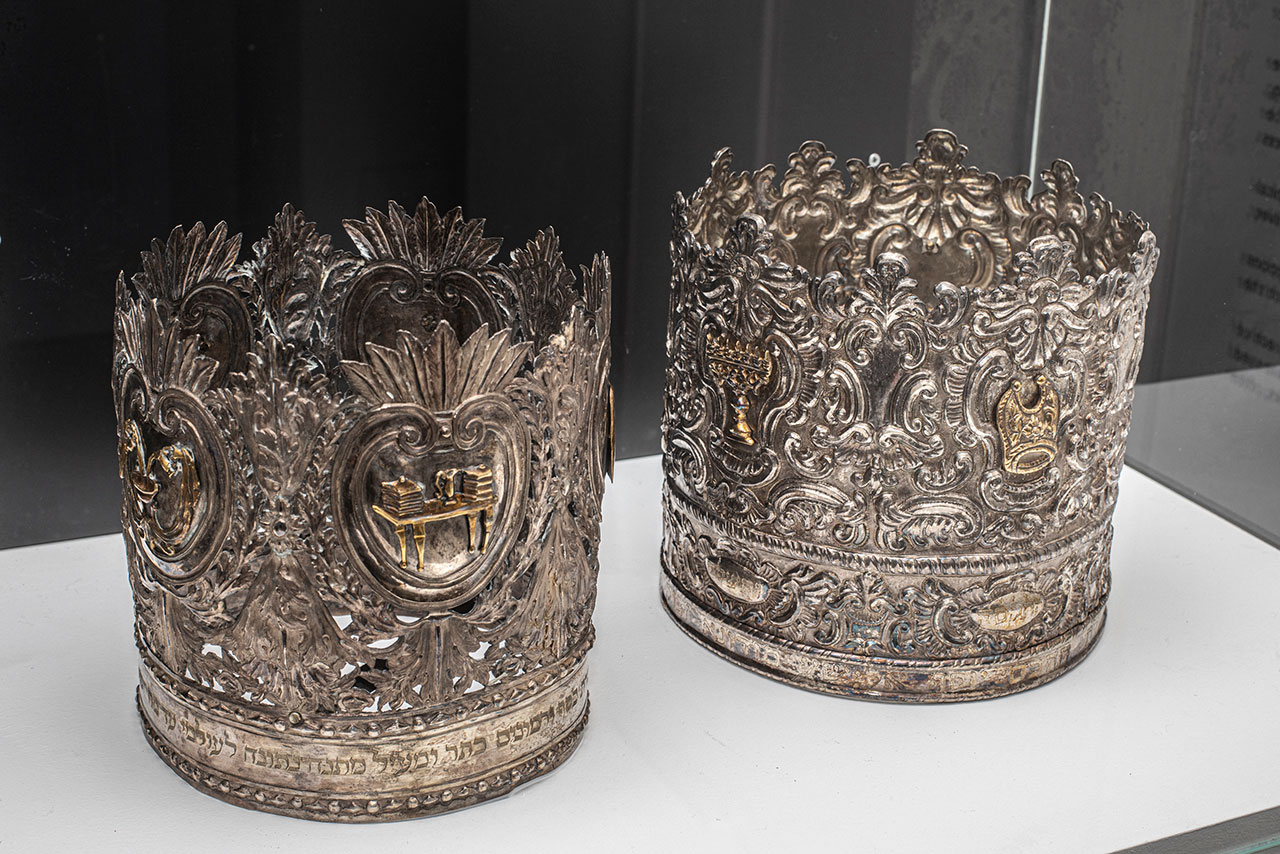Ceremonial objects
Jewish religious life revolves around two important elements: public and private ritual.
The centrality of prayer and the Sefer Torah led to the manufacture of ceremonial objects, items used in public rituals, which visually underscored their value. The Torah is adorned with decorative objects, used during prayers in the synagogue.
The objects of Jewish ceremonial art are distinguished by symbols, some iconographic, and by their shape. Style is never per se a specific element in Jewish art. This characteristic is seen in the objects on display. For the most part, they come from the Venetian area and reflect the tastes of the time and place where they were created.
Keter-Crown
Depending on their place of origin, Torah crowns are called ketarim or ataroth, two terms meaning crown. Standing atop the Torah scrolls, their very presence emphasizes its importance.
Jewish tradition depicts the Torah not only as the tree of life, but also as a bride and daughter of the king, understood as the God of Israel: thus, it must be regally dressed in a manner befitting a bride or princess and this most likely explains why it was crowned.
The style of the ketarim is influenced by the geographical area of production; the most favored material is silver, at times with precious stone and coral inlays. In many cases, the crowns bear dedicatory inscriptions with the name of the donor and the year in which the object was offered to the synagogue.
The Jewish year is written in Hebrew letters, each of which has a numerical value. When the letters are used as numbers, this was indicated with small marks, often dots.
